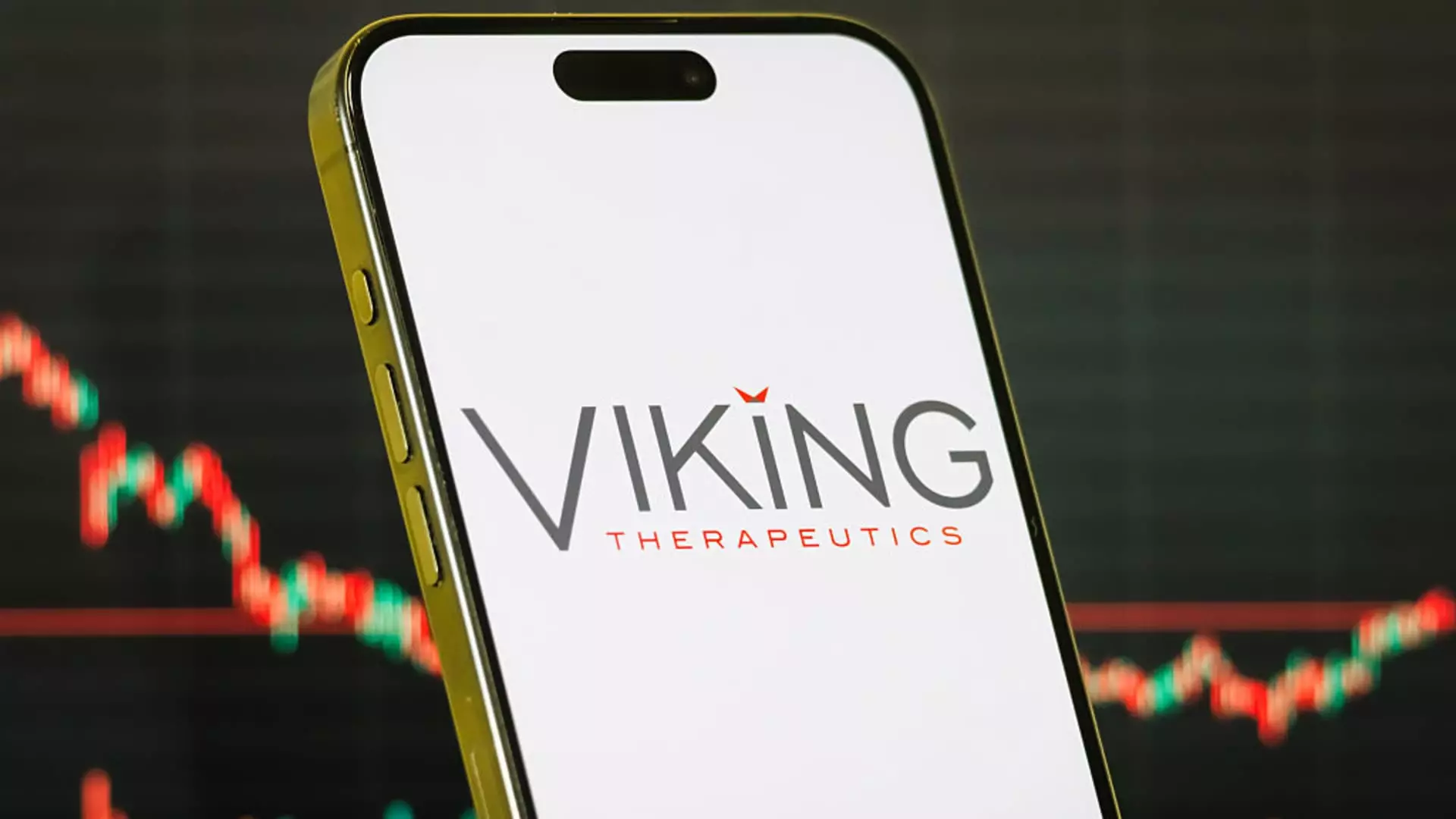In the high-stakes arena of pharmaceutical innovation, Viking Therapeutics’ recent downfall underscores the perilous nature of overestimating early-phase trial results. Once hailed as a promising challenger in the obesity drug sector, Viking’s mid-stage data revealed a sobering reality: their daily pill, VK2735, failed to deliver the breakthroughs investors envisioned. The precipitous 40% decline in stock value is a stark reminder that promises of revolution can often be hollow, especially when premature hype overrides cautious realism.
Despite the initial excitement, Viking’s data starkly contrast with the performance of established heavyweights like Eli Lilly and Novo Nordisk. These giants are not only dominating with results that demonstrate sustained weight loss over longer periods but also exhibit better tolerability profiles. Viking’s relatively short trial periods, limited weight loss percentages, and high discontinuation rates have rendered its offering less attractive — raising questions about the true capacity of smaller biotech firms to challenge entrenched industry leaders in such a lucrative market.
The Myth of a Fair Fight in the Weight Loss Race
The competition in obesity pharmacotherapy isn’t just fierce; it’s a distorted battlefield where the odds are heavily stacked against newcomers. Viking’s ambition to carve out a niche in the oral-pill segment appears increasingly unrealistic when faced with the rigorous trials and extensive development timelines of Eli Lilly’s and Novo Nordisk’s drugs. The latter have amassed significant clinical data, demonstrating up to 12.4% weight loss over prolonged periods—metrics Viking cannot match in the near term.
More disturbingly, Viking’s high discontinuation rate—close to 28% in just 13 weeks—raises serious concerns about side effects and patient compliance. Gastrointestinal issues, including nausea and vomiting, disproportionately affected Viking’s patients, further diminishing its competitive edge. Meanwhile, the more established players are not only showing better retention but also less severe side effects, making Viking’s future prospects look rather bleak and, dare I say, overhyped.
The Reality Check: Market Dynamics Favor the Giants
This apparent failure is less a reflection of Viking’s lacks and more an indictment of the flawed optimism that surrounded early-stage biotech ventures. Investors naturally gravitate toward disruptive narratives, but the reality is that in the realm of weight loss pharmaceuticals, incumbents like Eli Lilly have already secured a commanding lead. Their continued development of orally administered GLP-1 and GIP combination therapies suggests they will maintain dominance, especially given their extensive data that supports both long-term efficacy and patient tolerability.
Viking’s approach, which aimed to mimic natural gut hormones, was inherently risky. The challenge of translating biological plausibility into tangible, durable results is monumental. The market already favors drugs like Wegovy—designed for longer-term use with proven efficacy and manageable side effects. Viking’s failure to outperform or even match these benchmarks highlights that innovation alone cannot substitute for proven, rigorous clinical validation.
The Disillusionment with “Next-Gen” Obesity Pills
The real lesson from Viking’s setback is that the hype surrounding “game-changing” obesity pills is often misplaced. The allure of a convenient oral treatment that rivals injectable options has led many to overestimate the feasibility of quick wins. However, the complex physiology behind obesity and appetite regulation demands more than just a clever drug delivery format.
Furthermore, the race to develop oral alternatives — often driven by market and investor pressures — overlooks the importance of patient experience, safety, and efficacy over the long haul. The fact that Viking’s pill was associated with significant gastrointestinal side effects, akin to or worse than existing treatments, underscores the difficulty of innovating within these biological boundaries. It’s a sobering reminder that durability and real-world tolerability often trump mere numerical weight loss percentages in determining clinical and commercial success.
Viking’s recent misstep exemplifies the limits of early-stage promise and the harsh realities of the pharmaceutical market’s current landscape. It exposes how fervor for disruption can sometimes blind stakeholders to the foundational elements of successful drug development — robust data, patient safety, and real-world efficacy. In the end, the giants are not only winning—they are reinforcing why longevity and experience often eclipse the allure of innovation in a market desperately in need of results.

